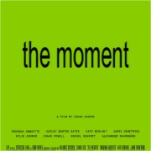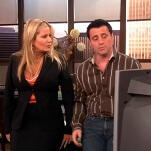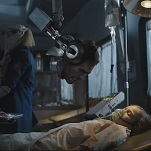Soderbergh’s commercial and creative instincts prove to be as sharp as ever in his new film Haywire, a stripped-down and relentless action vehicle for MMA superstar/American Gladiator Gina Carano. Written by Lem Dobbs, who previously collaborated with Soderbergh on Kafka and The Limey—the latter resulting in a famously contentious commentary track—the film stars Carano as Mallory, an ass-kicking special operative who seeks revenge after her employer tries to have her killed. Michael Fassbender, Channing Tatum, and Ewan McGregor are among the pummeled, and Michael Douglas and Antonio Banderas deliver fine support as behind-the-scenes power brokers. Soderbergh recently spoke with The A.V. Club about working with Haywire’s unexpected star, finding the natural rhythm of fight scenes, and why he doesn’t miss shooting on film.
SS: My experience over the years with working with people who are not actors or not trained actors is that you have to get to know them well enough to see what they have that’s translatable onto the screen. So you’re constantly calibrating to play to their strengths. And the key is to never ask them to do things that are beyond their abilities or are really far away from who they are at their core. In both cases, even more so in this, I saw Mallory as kind of a female Clint Eastwood. From the get-go, Lem was purposefully writing very lean, terse dialogue for her, because I didn’t want her to be chatty. And I also felt that that was going to be easier on Gina. You don’t want to give her a Paddy Chayefsky monologue. That’s not what she does, and that’s not why we’re going to see her.
AVC: So what about the other side of it, about the preparation for the fights themselves? She went through stunt training and special ops training. Did you as well, in terms of how the choreography was going to work?
SS: You know, I just sort of watched movies where I felt the action was well-staged and tried to sort of assimilate the language of shooting a certain kind of action. I knew I didn’t want to do handheld stuff. We had people who could really fight, so I wanted the camera to be stationary, and through editing and movement with the camera on a dolly. I wanted to use wide lenses and looser shots than you’d typically see when you’re shooting action. So I had a toolkit in my mind, and then I was just watching a lot of stuff to see how the people who do this stuff well are doing it.
AVC: What sort of stuff did you watch?
SS: Oh, you know, Fincher, Spielberg, Cameron, McTiernan. Just people who are good at staging action. I like to know where I am. I don’t like the kind of cutting where you don’t know where you are.
AVC: Was it important for each of the fights to have a flavor to them, for one to be distinguished from the other?
SS: Hopefully the environments that each take place in are different enough to distinguish them, and then the style of fighting is a little different in each one. In a couple of cases she’s attacked first, so that sets up a tricky dynamic. The first action scene we shot was also the first action scene that Lem and I spoke about. When we first started talking about the movie, he said, “Oh, you’ve got to see this Rod Taylor film Darker Than Amber. There’s this fantastic fight in a hotel room. It’s really brutal.” Thank god for YouTube. Found it on YouTube, and I said, “Yeah, what would be even cooler is if it’s in a four-star hotel room and she’s in a cocktail dress, and he’s in a suit. That combination of elements I think would be really striking.” So we were just looking for ways to distinguish each of the fights, but to a certain point, if you’re not going to indulge in bullshit, the thing’s got to come to an end. If you’re not flying people around on wires, and you’re only allowing them to do things that people can really do, it can’t go on for very long, because eventually somebody gets the drop on the other person and then it’s over. The tricky part was making sure they had a natural length and rhythm to them, and it felt like a real fight as opposed to something that a bunch of movie people threw together.
AVC: Were you ever tempted to do a They Live-style fight scene, where it just keeps going on and on and on?
SS: Yeah. And there were a lot of jokes about trying to get a zombie in here, just because zombies are huge now. Maybe the next one.
AVC: One of the distinguishing elements of the fight scenes in the film is that they have no sound other than that of people pummeling each other. Can you talk about why you did that? Is this where having someone who can actually fight plays to your advantage?
SS: I just find it annoying that in these sequences, traditionally, there’s music trying to pump you up. I don’t like that, personally, as an audience member. This just reflects my taste. And also because we had people who were really doing it, and really could do it, I felt like to drown those sounds out with music, or have them competing with music, would really diminish the fights. It was never intended that we would have music over those fights. There was some pushback over that. There were days, especially for the scene on the beach on the end, where some people were trying to convince me to put score over it, and I just wouldn’t.
AVC: Just because you’re getting the sound of waves and…
SS: Yeah. I just thought, “No, it’s great. We have the waves, we have the sound of their feet on the sand, and the sound of her punching him in the face.” Ewan [McGregor] was very excited. That scene was something we shot after I put the film together, and I thought, “She’s got to get her hands on him. It’s not really satisfying for her to ride off in a motorcycle and that’s it.” I called Ewan and said, “I’ve got some good news and some bad news. The good news is you get to fight Gina.” He’s like, “Oh, that’s fantastic.” He goes, “I was really hoping I would get to.” He was Obi-Wan, he wanted to get in there. I said, “The bad news is you’ve got to get that haircut again.” But he was willing to do it.
AVC: On the other side of this, you are dealing with actors like Ewan McGregor, who aren’t necessarily seasoned fighters. Is there cover up for that?
SS: No. All those guys, Channing [Tatum] and [Michael] Fass[bender] and Ewan, they’re all very agile. They rehearsed really extensively with her, and they were ready to go. It was important to me to have people who were capable of meeting her halfway, because if I’m not cheating with her, I don’t want to cheat with them, either. So it was fortunate we got guys who could go toe to toe with her. Michael got the worst of it. She really beat the shit out of him. It was two pretty intense shooting days.
AVC: And that was right away.
SS: Yeah, that was right up front.
AVC: Were there lessons about how you’d go about doing things later? Was stunt-fighting something that took her time to get used to?
SS: Yeah, it did. It took her a while to learn how to pull her punches. She hit a couple of the coordinators by accident. But she got there. That was a tricky scene for her, since we were able to give Fassbender a little bit of padding, because she’s really strong. She hits really hard. But she didn’t get any padding, because she’s in a cocktail dress. She had to keep telling him, “You can hit me harder than that. It’s not going to look good if you don’t.” Him throwing her into the TV, that’s one take. Somebody could get hurt doing that, and when we got it in one take, I said, “That’s it, we’re not doing that again.”
AVC: The particulars of what these operatives are doing is abstracted to a large degree, but there’s a distinction made between government operatives and private contractors. How much did you want to allude to the special ops game as it actually is?
SS: I wasn’t interested in making an exposé about these private security companies that are hired by governments like ours to go and do things that we don’t want to be directly associated with. That shit happens every day. But that’s not what the movie’s about, really, and I didn’t want to turn it into some op-ed piece. What I was interested in was the idea of a woman navigating her way through this world, especially when someone decides they don’t want her around anymore for reasons that are ambiguous and complicated. It would appear that Kenneth [McGregor’s character] is upset both that their relationship ended and she wants to leave his company and when she does she’s going to take all the business. So it’s a kind of, “If I can’t have her, then nobody can have her.” It’s a world in which people’s motives are questionable and shadowy. Her problem, maybe she should have spent more time asking, “Well, who is this guy? Why am I pulling this guy out of Barcelona exactly?” She doesn’t really care. All she cares about is, “How are we going to get him out of there?”
AVC: Would you then ultimately consider Haywire a feminist movie rather than a political movie, or neither of those?
SS: I wasn’t really thinking about that. All I was motivated by was, “It would be really cool to see a woman do this stuff for real.” I just feel like I haven’t seen that, and I felt like Gina Carano was the person to do it. If you’re going to take a runner on somebody, she’s the person to do it. I just felt that she had the right combination of elements. She was game. It’s a weird thing to have somebody pop up and go, “Do you want to be in a movie? And we’ll surround you with all these actors.” You could ask her, Gina would be the first to tell you that being in the movie, as scary as it was being in front of a camera, the fighting stuff was really fun, comfortable for her. She would tell you the most nervous she was was standing in front of Michael Douglas and having to deliver lines.
AVC: Was there a big rehearsal process there? Were there some extra things that had to be done to get her ready for dialogue scenes?
SS: We had people working with her, just sort of doing scenes with her and running lines, just so she’d stay fresh—because I was, you know, shooting and cutting the movie in addition to directing it—and use that time to sit with her between setups just to run lines. But a lot of the technical training she went through, the counter-terrorist surveillance training that her technical advisor put her through, was really great preparation for her. Just to get into the mindset of someone who does that for a living was very helpful to her.
AVC: You like to shoot movies pretty quickly. Were you concerned that it would be a stumbling block to have someone like that right in the center?
SS: No, I felt the opposite. The fact that we move quickly and you’re working all day, you’re not in your trailer, you’re on set all day, and things are happening—I work with the same crew pretty much from film to film. It’s a very congenial atmosphere. I was confident we could create an environment for her in which she’d feel comfortable and feel that people were rooting for her. But, to a person, all the male cast members who were working with her were very generous with their time, and generous with her when we were shooting. We all wanted her to win.
AVC: Given your collaboration with Lem Dobbs with this and The Limey, and your films in general, I was curious to know when in the process you leave the writer behind. Have there been other situations [like The Limey] where you found yourself radically altering the film as written in the shooting and editing process?
SS: The answer to the first question is, I never leave the writer behind, because you rewrite the movie in post, or at least I do. I always do, and I feel like anybody who doesn’t at least explore that possibility is short-changing themselves. Editing is the most fun and most exciting part of the process. I was showing Lem every iteration to get his thoughts, and talk about structure, and talk about, “Hey, if we wanted to shoot some more stuff, what would it be?” So that’s an ongoing discussion. Haywire is fairly close to what’s written, but when [we were in post], we tried a lot of different structures there before settling on the one we have now. And, ironically, the film that went through the most transformation in post that I’ve ever made was The Limey. That was completely built in the editing room.
[pagebreak]
AVC: Did you sense when you were putting The Limey together that Lem would have some displeasure, or did that all come later?
SS: That was the most scared I’ve ever been in an editing room. It was shot and cut chronologically. It was written that way, and it was done that way, and it didn’t work. I’m not saying that’s the script’s fault. I’m just saying it didn’t work. It had to be rethought from frame one. And before we figured out what the algorithm was, I thought we were in trouble. I remember the day—God, this would be January 1999—Out of Sight had just won the National Society Of Film Critics awards for picture, director, and screenplay, and I got a call from Stacey Sher, one of the producers, going, “I’ve got great news, it was just announced that blah blah blah.” And I remember thinking, “I really don’t care. I would trade that for one edit that would work.” It was one of those weird juxtapositions of people applauding you and the reality of what you’re experiencing in the moment is, “I’m in real trouble. I’m stuck.” And it was ironically a piece of music that Cliff Martinez had sent to me to listen to that got us unstuck. It was this piece that runs throughout the movie, a sort of piano riff. It’s very atmospheric, very cinematic. Just by chance he said, “Here’s a little doodle I’ve been working on,” and when I heard it, it had a memory sound. And I said to [editor] Sarah Flack, “Load that into the AVID,” and I just started rattling off a list of random images from the film, and I said, “Put these images together. Just playing them.” And we started looking at images juxtaposed over that piece of music and suddenly I could see, “This is what we have to do. This is what we’re going to do to solve this.” And we started, and it was painstaking, but that’s how we figured it out.
AVC: And you’ve never had an experience quite like that?
SS: I’ve been in situations where I’ve felt like, “We’ve got some work to do,” or “I need to do some more shooting,” or, “I’m going to have to make some tough decisions.” I have an hour of edited material that was cut out of Contagion. I had to make some really, really tough choices there.
AVC: Are you ultimately pleased to make those choices?
SS: Yeah, you have to.
AVC: You’re not someone who’s like, “Well, I want a three-hour cut down the line at some point”?
SS: No, not at all. I’m not precious about anything. The effort it took to get something means nothing to me in post. It means nothing to the audience. I’ll chop limbs off. I’ll put an arm where a leg should be. I’ll do anything.
AVC: But it sometimes means something to the actors and writers, doesn’t it?
SS: Yeah. But, again, everybody, including me, has to submit to what it needs to be. The thing is at the top of the pyramid, the best version of the thing; we all have to serve that. You forget that at your own risk. And I think movies are too long, in general.
AVC: Is that the part of the process you like the most, the editing?
SS: Yeah. Absolutely.
AVC: Why? Just the control?
SS: It’s so unique. There’s nothing else exactly like it in any other art form, the orchestration of so many different elements. It’s endlessly fascinating what can be done editorially. You can create meaning where there was none, you can create feeling where there was none, you can create narrative where there was none. Two frames can be the difference between something that works and something that doesn’t. It’s fascinating.
AVC: Am I correct that Ocean’s 13 was the last movie you shot on film?
SS: Uh, yeah.
AVC: Will you ever go back?
SS: Not unless there was some specific effect that I felt you couldn’t really recreate digitally. That’s the only reason. Whether it was the infrared or if I wanted to film something in Super 8mm, there would have to be a specific reason to go back.
AVC: Do you think there are any real obvious strengths that film still has over digital?
SS: No. Not to me.
AVC: Do you have any thoughts on the way that digital photography and projection has changed the landscape? Because it’s happening so quickly, much to the chagrin of the people who have a lot of affection for celluloid. Where you do stand on that?
SS: I love it. We finish the film, and we make the DCP, and we screen it, and then they go, “Okay, now we’re going to run the print,” and it’s terrible. It’s such a disappointment. I look at it and go, “Ugh, it’s soft. It doesn’t have any snap. It’s moving all over the place. The color shifts on the reel changes.” I’m thrilled with where we’re heading.
AVC: You had at one time talked about doing a Cleopatra musical in 3D. Are you still anxious to shoot in that format?
SS: No. I would have been on that. I did some tests for Contagion. I thought, “Well, somebody’s going to shoot a drama in 3D, why not us?” And I wasn’t happy with it, for what we were going to do. I felt like it would be a mistake.
AVC: Do you see it as something that has potential?
SS: Oh yeah. If I’d done Cleo, we’d have done it in 3D and had a great time. But I decided in the case of a movie like Contagion, there were two kinds of shots that are very important in the dramatic tool kit that I felt were distracting in 3D. One is the “over the shoulder,” and the other is a clean single. And when we did this test, I thought the “over the shoulder” looked weird because we had this big blob out of focus, one part of the screen was in your lap. And a clean single looked like you’d just cut the person out and stuck them on a background, and I thought, “If I’m trying to get an emotion out of people, I can’t risk them being distracted by that,” so I blew it off.
AVC: But there was Contagion: The IMAX Experience.
SS: Yeah, that was awesome.
AVC: What was the story there?
SS: They came to us. Rather, Danny Feldman at Warner Bros. had been in conversation with IMAX, and they said to him, “We don’t just want to be known as a format that caters to effects movies. Why don’t you guys let us do a 10-minute test on Contagion and have Steven come out and look at it?” And I was like, “Eh, all right, I’ll look at it.” I loved it. It was great. It just intensified everything. You could see Gwyneth [Paltrow]’s sweat, and it just amped everything up. Their quality control is extraordinary, and the image is fantastic, and the sound quality. It’s a great way to see a movie, period. They turned me out, boy. It didn’t take long. [Laughs]
AVC: Contagion seems like such a strange IMAX movie. It seems like Haywire would be better suited.
SS: We wanted to, we wanted to, but Underworld had them, had all the IMAX shit. Right after the Contagion test, I called Relativity and said, “Can we get in on this?” and they were like, “Somebody else has it.” Because they only have so many screens.
AVC: It doesn’t have to do with equipment that’s available?
SS: No, they just have like, 75 screens in the U.S., and you’ve got to let them know a year ahead of time that your movie’s coming out on this date and you want those screens.
AVC: Sounds like there would have to be a lot of politicking involved if there are only so many screens and certain windows and that kind of thing.
SS: Yeah. The good news for them is it’s a popular format. People like Chris Nolan are shooting isolated sequences in IMAX. Those cameras are the size of a Volkswagen.
AVC: Considering how you work, would that ever be something you would want to do?
SS: No. We had a funny conversation about it the other day, because [Nolan] was running a test of some of the stuff for the new Batman film in Burbank, and he’s like, “Hey, you should come check this out,” and I couldn’t make it, because I had a location scout. But I was saying, “Jesus, Chris, those cameras are so big. What do you do if you have a car shot and you want to put the camera somewhere? What do you do?” And he goes, “Well, you know, the good news is on a Batman movie, I decide what the shots are and then they just build a version of the car where the camera can be where I want it.” Literally they just chop the whole part of the car away and stick the camera there. And then he goes, “You can’t do that on a normal movie, but on a Batman movie, you can do it.”
AVC: You’re currently in post-production on one movie, Magic Mike, and preparing two other movies, The Side Effect and Liberace. Have you gotten yourself into a groove of doing all these things at once?
SS: Yeah, and the technology really allows for that. You can just move so quickly now, put things together so quickly. You can cut things that night and think, did you get it all? Do you need to go back tomorrow to get this other piece? It’s great. If the workflow that I’ve been using for the last couple of years existed earlier in my career, those movies would be a lot better.
AVC: Is there no cost to not allowing yourself time to fuss over a movie?
SS: No. God. My first three movies, I didn’t start editing until we were finished shooting. That’s unthinkable to me now. I edited Sex, Lies, And Videotape on a 3/4-inch Sony RM440 news-editor machine. Even that was quicker than film, but the point was, I wasn’t able to edit while we were shooting. Our workflow was, we would look at dailies, silent, and then we’d have this one long telecine thing scheduled for when we wrapped. God, now, that would be a better movie.
AVC: How much planning do you do before you’re on set? Because with something like Contagion, where you have explicate a lot of complicated information, it seems like you’d have to be very meticulous, but then you have something like The Girlfriend Experience, which incorporates lots of external elements and seems a little looser. Does it vary from project to project?
SS: No, not really. I have a plan, I always have a plan, but then I’m always ready to throw the plan out, and everyone’s ready to make a radical left turn if necessary. But they’re all pretty similar. What helps is, I make sure the writers are around. Or if they’re not on set, they’re easily accessible. How to shoot is not normally the difficult part. What to shoot is always the question. Chances are, if you’re having trouble with how to shoot something, it’s because there’s something wrong with the “what.” And I start to go down the list of questions like, “Why is this resisting all of my efforts to capture it properly? What’s wrong? Is it the text? Are we in the wrong location? Are there one too many characters in the scene? Something’s not right.” I’ll slow everything down and stop. I’ll just stop completely with the cast and the writers and try to figure out, “Why isn’t this working?” It doesn’t happen a lot, but there’ve been days.
There was a day on one of the Ocean’s movies where I just sent everybody home. We had this one scene—it was one of the scenes in those movies where you have 11 people talking—and I just couldn’t come up with a solution. I was just stuck. I just didn’t know how I wanted to do it. We had two days’ schedule to do it, and at lunchtime on the first day I sent everybody home. I said, “You can just go home, I don’t know how to do this. I need to think.” And I decided how to do it that afternoon, and we came in the next morning and we were finished by 11 o’clock, because once I knew what to do, we went through it very quickly. I’ve learned that you can’t force it; you just got to stop and figure it out.
AVC: Can you think of any cases on Haywire where you had to make one of those radical left turns?
SS: The Barcelona sequence. The decision to shoot it that way and present it that way, I made it the morning of that shoot. To go off speed, handheld, to do the color thing. I decided that that morning.
AVC: Do you make a lot of decisions based on locale? This is a film that jet-sets from one place to another. How in a film like this one were you trying to evoke the cities you were in?
SS: Usually I’m thinking about the palette. I’m thinking about the color for the most part, then I’ll start thinking about composition and movement. One thing that I don’t like to do—I feel like you need a really good reason to shoot establishing shots. I’m not a fan of establishing shots. Barcelona’s one of the most beautiful cities in the world, but I knew I wasn’t going to ride around and shoot shots of Barcelona. I wanted to reveal it as [Carano] saw it, not as a tourist would see it. And a lot of people don’t feel that way. They like those shots.
AVC: Those helicopter shots?
SS: I have a “no helicopter” rule, just because I can’t figure out what to do with a helicopter that hasn’t been done, and still is appropriate for whatever film you’re making. I’m sure there’s some crazy shit nobody’s done, but the point is, you shouldn’t be doing crazy shit just because it’s crazy shit. That’s something you always get asked when you’re going and making a road movie like this. The unit production manager will ask you, “Do we need a helicopter?” and I say, “No. No helicopters.”
AVC: Back when we last spoke, which was after Che, you talked about Cleo and the calculations you had made about how it could be a commercial success. Do you think you have a good sense, at this point, of what audiences want?
SS: No. I’ve tried to get better about weighing what I think the accessibility of an idea is against the cost of executing it. I’ve tried to be smarter about that, because if you’re not smart about that, you’re going to be unemployed. But I’m still mystified about what works for people. And I’m not talking about my movies, I’m talking in general. I’m mystified by the stuff that doesn’t work. I’m mystified by what’s going on in the critical side, too. Stuff I like is getting trashed and stuff that is being praised I think is terrible. I don’t really feel in sync with what’s happening, but at the same time, what I think keeps me afloat is that I try not to be, and don’t want to be, very indulgent. I try to make the films as lean as possible, and to not spend a lot of time crawling up my own ass creatively.
AVC: It seems the risk with Contagion is that it follows the spread of this disease without the hyperbole that’s usually associated with that kind of disaster movie.
SS: Here was my plan: My way of trying to keep the film in a commercial zone was to treat it like a genre film, to treat it like a horror movie, and not make it feel important, and not make it feel like Oscar bait. I wanted it to move. I really looked at it like a genre film. At the same time, I wanted not to indulge in a lot of the tropes that genre films trade in. But it was an Irwin Allen movie, as far as I was concerned.
AVC: There are certain subtle gestures in that film, just involving things that are touched, and how a disease like this would spread, that are as far from an Irwin Allen film as you could get, though.
SS: Yeah. We had rules on that one, like we can’t go to a city where we haven’t been and show a bunch of extras dying, that kind of shit. We’re not going to show the president. We had a list of things that people traditionally do in this kind of movie and we just decided, “We’re not doing that.”
AVC: You talked about critical perception. What do you feel is your most underrated film? Is there an orphan in your filmography that you’d like to see adopted?
SS: I don’t know. My sense of [critical reaction] since Traffic is based on a vague understanding of what the response is, because I stopped reading reviews about my own movies. I read stuff about other people’s movies. My sense is that The Good German was not fully understood. Probably of all of them, that would be the one. There are other things that have been lambasted that I think had things wrong with them, but [The Good German], creatively, from my standpoint, is a very unified piece, and was, again, from my viewpoint, successful at what it was trying to do. It’s a weird thing to say, but it would appear to me axiomatic that if you understood fully what I was doing and appreciated it, you would like it. But that issue was more in the forefront because it needed critical support to work commercially, and it didn’t get it. So it lost every nickel. The lesson coming out of that one for me was that you should never assume anything coming from a critical standpoint. You should go into everything assuming you’re going to get crushed. It’s like when people talk about Obama. My whole attitude is, “You should govern like you aren’t going to get a second term.” I make every movie like it’s the last one. “If this was the last movie, what decision would I make?” That’s how I make my decisions.







































